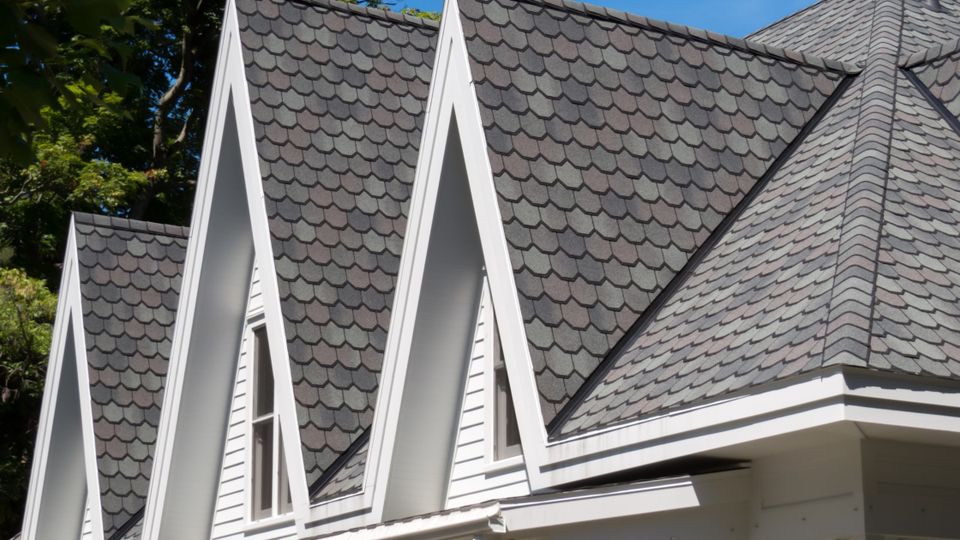

Types of roof shingles vary significantly in material, cost, and performance characteristics. Homeowners face numerous options when selecting roofing materials for new construction or roof replacement projects. Understanding the differences between roofing shingles helps you make an informed decision that matches your budget, climate needs, and aesthetic preferences.
Modern roofing shingles offer durability, weather protection, and style options that traditional roofing materials couldn't provide decades ago. Each shingle type brings unique advantages and challenges that affect installation costs, maintenance requirements, and long-term performance. Smart homeowners research these differences before committing to a roofing project.
The right roofing materials protect your home while enhancing its curb appeal and resale value. Climate conditions in your area influence which types of roof shingles perform best over time. Understanding roof components helps you communicate effectively with contractors about your shingle selection.
Learn more about roof anatomy and structure in our comprehensive guide.
Modern roofing shingles offer durability, weather protection, and style options that traditional roofing materials couldn't provide decades ago. Each shingle type brings unique advantages and challenges that affect installation costs, maintenance requirements, and long-term performance. Smart homeowners research these differences before committing to a roofing project.
The right roofing materials protect your home while enhancing its curb appeal and resale value. Climate conditions in your area influence which types of roof shingles perform best over time. Understanding roof components helps you communicate effectively with contractors about your shingle selection.
Learn more about roof anatomy and structure in our comprehensive guide.
Understanding Roofing Shingles Fundamentals
Basic Functions and Protection
Roofing shingles serve as your home's primary defense against weather elements. These overlapping pieces create a water-shedding surface that protects the roof deck and interior spaces. Quality roofing shingles withstand harsh weather conditions including wind, rain, snow, and temperature fluctuations.
Modern Manufacturing Advances
Modern roofing shingles incorporate advanced materials and manufacturing techniques. Most products include impact resistance, UV protection, and enhanced fire resistance compared to older options. Manufacturers design roofing shingles to meet specific climate challenges and building code requirements.
Installation Considerations
Installation methods vary between different types of roof shingles. Some materials require specialized tools and techniques that affect labor costs. Understanding these differences helps you budget accurately for your roofing project.Quick tip: Check local building codes before selecting roofing shingles. Some areas restrict certain materials due to fire risk or weather concerns.
Architectural Roofing Shingles
Architectural roofing shingles offer enhanced durability and visual appeal compared to basic strip shingles. These dimensional shingles feature multiple layers that create depth and shadow lines. Manufacturers design architectural shingles to mimic the appearance of wood shakes or slate tiles.
These premium asphalt shingles incorporate a fiberglass mat base with enhanced asphalt coating. The multi-layer construction provides better wind resistance and impact protection. Most architectural roofing shingles carry longer warranty periods than traditional asphalt shingles.
Dimensional shingles come in numerous color and pattern options. Manufacturers offer styles that complement various architectural designs from traditional to contemporary. These roofing shingles cost more than basic options but provide superior performance and curb appeal.
Installation of architectural shingles requires attention to alignment and overlap specifications. Proper installation ensures optimal performance and maintains warranty coverage. Many roofing contractors prefer these materials because they hide minor installation imperfections better than flat shingles.
These premium asphalt shingles incorporate a fiberglass mat base with enhanced asphalt coating. The multi-layer construction provides better wind resistance and impact protection. Most architectural roofing shingles carry longer warranty periods than traditional asphalt shingles.
Dimensional shingles come in numerous color and pattern options. Manufacturers offer styles that complement various architectural designs from traditional to contemporary. These roofing shingles cost more than basic options but provide superior performance and curb appeal.
Installation of architectural shingles requires attention to alignment and overlap specifications. Proper installation ensures optimal performance and maintains warranty coverage. Many roofing contractors prefer these materials because they hide minor installation imperfections better than flat shingles.
Asphalt Roof Shingles
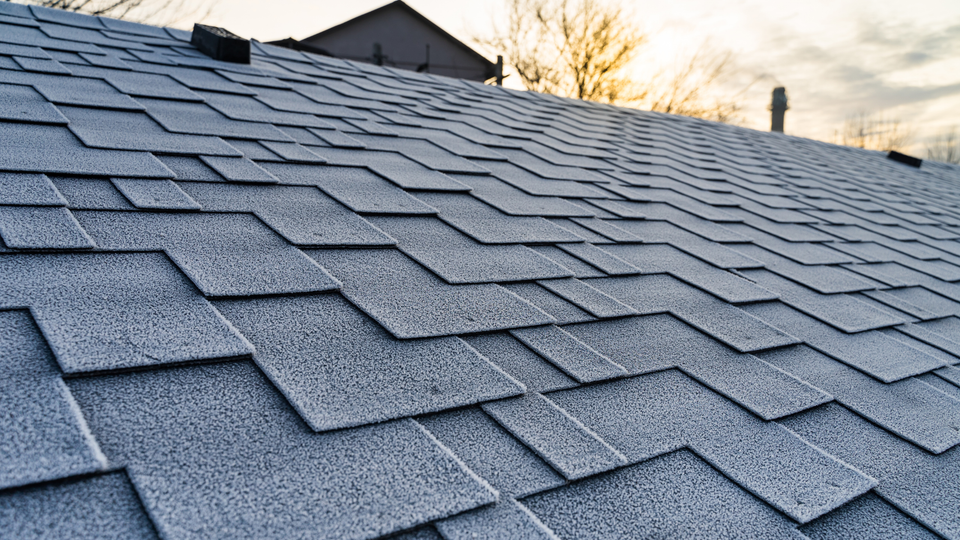
Market Dominance and Popularity
Asphalt roof shingles dominate the residential roofing market due to their balance of cost, performance, and availability. These roofing materials consist of a fiberglass or organic mat coated with asphalt and topped with ceramic granules. Most homeowners choose asphalt shingles for their affordability and proven track record.
Basic Asphalt Options
Traditional asphalt shingles include three-tab and strip shingle designs. 3 tab shingles provide basic weather protection at the lowest cost. These roofing shingles work well for budget-conscious projects but offer limited wind resistance and aesthetic appeal.
Premium Performance Products
Premium asphalt shingles incorporate advanced materials and construction techniques. These products resist algae growth, provide better impact resistance, and offer enhanced color retention. Some premium options include reflective granules that reduce cooling costs in hot climates.
Installation and Availability
Asphalt roofing installation follows standardized procedures that most contractors understand well. This familiarity keeps labor costs reasonable and ensures proper installation techniques. Replacement parts and repair materials remain readily available throughout the product's lifespan.Laminated Construction Benefits
Laminated shingles represent the most popular category of asphalt roof shingles. These products combine multiple asphalt layers to create texture and improve performance. Laminated construction provides better wind resistance than single-layer alternatives.
Specialty Asphalt Products
Other asphalt shingles include specialty products for specific applications. Impact-resistant versions protect against hail damage in storm-prone areas. Algae-resistant formulations prevent discoloration in humid climates. Fire-resistant options meet strict building code requirements in wildfire zones.
Did you know? Asphalt shingles account for over 80% of residential roofing installations in North America. Their popularity stems from the combination of affordability, availability, and contractor familiarity.
Wood Shingles and Natural Materials
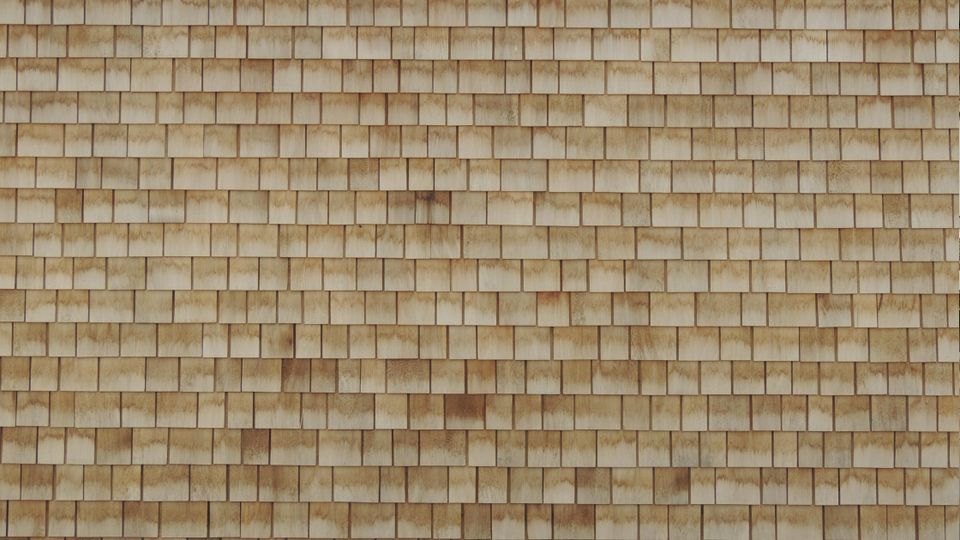
Natural Wood Benefits
Wood shingles offer natural beauty and environmental benefits that synthetic materials cannot match. Cedar shingles provide excellent insulation properties and natural resistance to insects and decay. These roofing materials age gracefully, developing unique character over time.
Shakes vs. Shingles
Traditional wood shakes differ from wood shingles in their manufacturing process. Wood shake shingles feature hand-split surfaces that create rustic texture and appearance. Cedar shakes provide superior weather resistance but require more maintenance than smooth-cut shingles.
Weathering and Patina Development
The natural aging process transforms wood shingles from their original color to weathered gray. This patina develops over several years and provides additional weather protection. Some homeowners accelerate this process with special treatments or stains.
Maintenance Requirements
Wood shingles require proper maintenance to achieve their full lifespan potential. Regular cleaning removes debris and prevents moss growth. Periodic treatment with preservatives extends their service life and maintains appearance. Proper maintenance can help wood shingles last 30-50 years.Fire Resistance Considerations
Fire resistance remains a concern with wood shingles in some areas. Building codes may restrict their use in high-risk fire zones. Treated wood shingles offer improved fire resistance while maintaining natural appearance.
Environmental Sustainability
Natural materials like wood shingles provide environmental benefits through renewable sourcing and biodegradability. These roofing materials require less energy to produce than synthetic alternatives. Responsible forestry practices ensure sustainable wood shingle production.
Premium Cedar Options
Cedar shingles represent the premium option in wood roofing materials. Western red cedar provides natural oils that resist decay and insect damage. These wood shingles cost more than other species but offer superior performance and longevity.
Installation Expertise
Installation of wood shingles requires specialized knowledge and techniques. Proper spacing allows for expansion and contraction with weather changes. Ventilation requirements differ from other roofing materials to prevent moisture problems.
Slate Shingles Premium Option
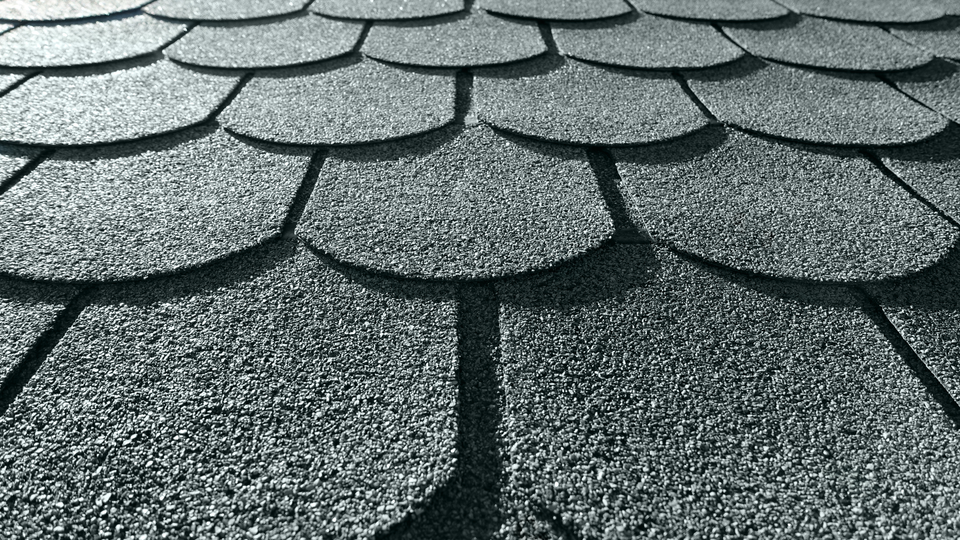
Slate shingles represent the pinnacle of natural roofing materials. These roofing shingles can last over 100 years with minimal maintenance. Natural stone provides unmatched durability and fire resistance that synthetic materials cannot duplicate.
Slate tiles come in various colors including gray, green, purple, and black. Color variations within individual pieces create natural beauty that appeals to discerning homeowners. These premium roofing materials enhance property values significantly.
Installation of slate shingles requires specialized skills and equipment. The weight of natural stone demands structural evaluation and possible reinforcement. Experienced contractors command higher prices for slate installation due to the technical requirements.
Maintenance of slate shingles involves periodic inspection and replacement of damaged pieces. Individual tiles can crack from impact or freeze-thaw cycles. Professional installation and repair ensure optimal performance and appearance.
Cost considerations make slate shingles the most expensive roofing option. Initial investment includes materials, specialized labor, and potential structural modifications. However, the exceptional lifespan often justifies the higher upfront costs for long-term homeowners.
Slate tiles come in various colors including gray, green, purple, and black. Color variations within individual pieces create natural beauty that appeals to discerning homeowners. These premium roofing materials enhance property values significantly.
Installation of slate shingles requires specialized skills and equipment. The weight of natural stone demands structural evaluation and possible reinforcement. Experienced contractors command higher prices for slate installation due to the technical requirements.
Maintenance of slate shingles involves periodic inspection and replacement of damaged pieces. Individual tiles can crack from impact or freeze-thaw cycles. Professional installation and repair ensure optimal performance and appearance.
Cost considerations make slate shingles the most expensive roofing option. Initial investment includes materials, specialized labor, and potential structural modifications. However, the exceptional lifespan often justifies the higher upfront costs for long-term homeowners.
Solar Shingles Innovation
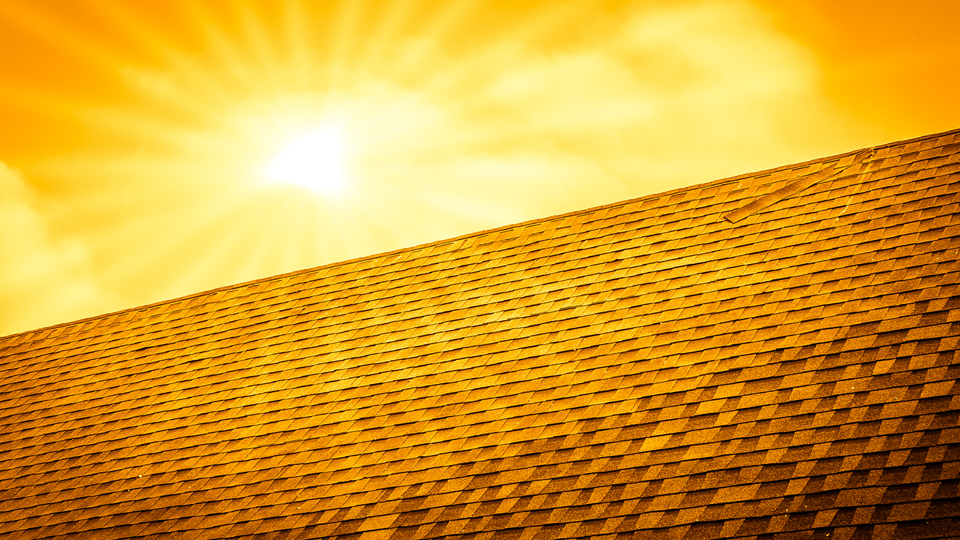
Solar shingles combine roofing protection with renewable energy generation. These innovative roofing materials integrate photovoltaic cells into traditional shingle designs. Solar shingles provide electricity while maintaining the appearance of conventional roofing shingles.
Solar shingles provide environmental benefits through clean energy production. These roofing materials reduce dependence on grid electricity and lower utility bills. Federal and state incentives often offset the higher initial costs of solar installations.
Installation of solar shingles requires electrical expertise in addition to roofing skills. Proper wiring and system integration ensure safe operation and optimal energy production. Many contractors partner with solar specialists for these complex projects.
Solar panels offer alternative approaches to renewable energy generation. Traditional panel systems mount over existing roofing materials rather than replacing them. This approach costs less but affects roof appearance more than integrated solar shingles.
Performance of solar shingles depends on roof orientation, shading, and local climate conditions. South-facing installations with minimal shade produce the most electricity. Professional assessment determines the viability of solar installations for specific properties.
Solar shingles provide environmental benefits through clean energy production. These roofing materials reduce dependence on grid electricity and lower utility bills. Federal and state incentives often offset the higher initial costs of solar installations.
Installation of solar shingles requires electrical expertise in addition to roofing skills. Proper wiring and system integration ensure safe operation and optimal energy production. Many contractors partner with solar specialists for these complex projects.
Solar panels offer alternative approaches to renewable energy generation. Traditional panel systems mount over existing roofing materials rather than replacing them. This approach costs less but affects roof appearance more than integrated solar shingles.
Performance of solar shingles depends on roof orientation, shading, and local climate conditions. South-facing installations with minimal shade produce the most electricity. Professional assessment determines the viability of solar installations for specific properties.
Standing Seam Metal Roofing
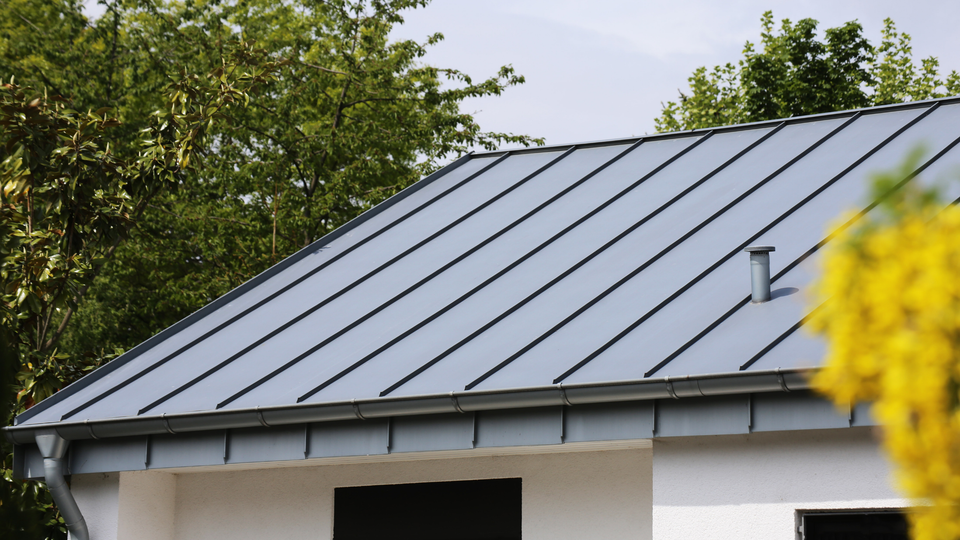
Standing seam metal roofing offers commercial-grade durability for residential applications. These metal systems feature raised seams that interlock adjacent panels. Standing seam metal provides superior weather protection and modern aesthetic appeal.
Standing seam metal roofing materials include steel, aluminum, and copper options. Each metal type offers different benefits in terms of cost, durability, and appearance. Steel provides strength at moderate cost, while copper develops attractive patina over time.
Installation of standing seam systems requires specialized tools and techniques. Panel attachment methods allow for thermal movement without compromising weather sealing. Professional installation ensures proper performance and maintains warranty coverage.
Maintenance requirements for standing seam metal remain minimal compared to other roofing materials. Periodic inspection identifies potential problems before they cause damage. Snow guards and other accessories may be necessary in heavy snow regions.
Standing seam metal roofing materials include steel, aluminum, and copper options. Each metal type offers different benefits in terms of cost, durability, and appearance. Steel provides strength at moderate cost, while copper develops attractive patina over time.
Installation of standing seam systems requires specialized tools and techniques. Panel attachment methods allow for thermal movement without compromising weather sealing. Professional installation ensures proper performance and maintains warranty coverage.
Maintenance requirements for standing seam metal remain minimal compared to other roofing materials. Periodic inspection identifies potential problems before they cause damage. Snow guards and other accessories may be necessary in heavy snow regions.
Clay Tiles Traditional Elegance
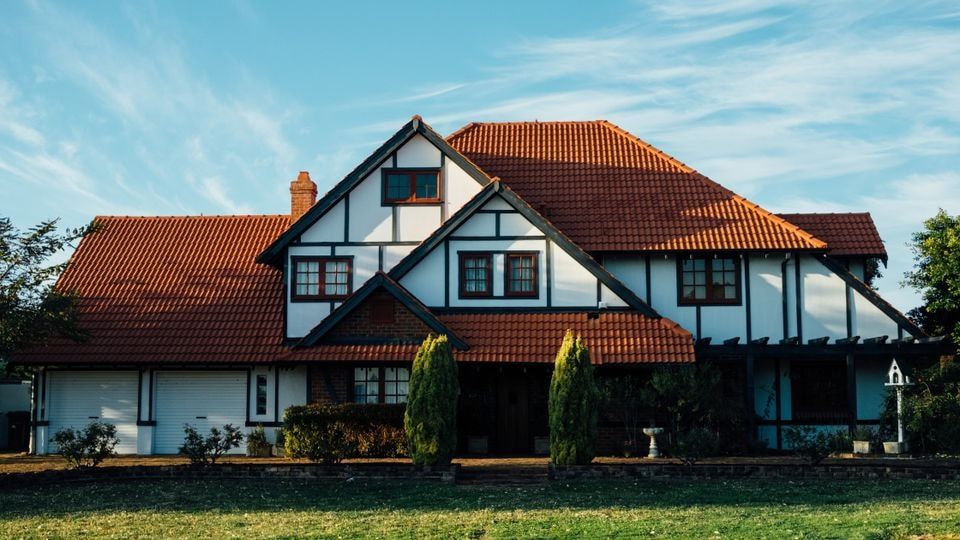
Clay tiles bring Mediterranean style and exceptional durability to residential roofing. These traditional roofing materials can last 75-100 years in appropriate climates. Clay tile roofing provides natural insulation and thermal mass benefits.
Clay shingles come in various profiles including barrel, French, and flat designs. Color options range from natural terra cotta to glazed finishes in multiple hues. Custom colors and special shapes accommodate unique architectural requirements.
Installation of clay tiles requires structural evaluation due to their weight. Specialized underlayments and fastening systems ensure proper performance. Building codes may require engineering analysis for clay tile installations in some areas.
Climate considerations affect clay tile performance and selection. Freeze-thaw cycles can damage some clay products in northern climates. High-quality clay tiles incorporate manufacturing processes that improve freeze resistance.
Concrete tile roof systems offer similar appearance to clay at lower cost. These products provide comparable durability and performance characteristics. Concrete tiles weigh less than clay but still require structural evaluation.
Did you know? Clay tiles can actually improve energy efficiency by creating an air gap that provides additional insulation. This thermal break reduces cooling costs in hot climates.
Clay shingles come in various profiles including barrel, French, and flat designs. Color options range from natural terra cotta to glazed finishes in multiple hues. Custom colors and special shapes accommodate unique architectural requirements.
Installation of clay tiles requires structural evaluation due to their weight. Specialized underlayments and fastening systems ensure proper performance. Building codes may require engineering analysis for clay tile installations in some areas.
Climate considerations affect clay tile performance and selection. Freeze-thaw cycles can damage some clay products in northern climates. High-quality clay tiles incorporate manufacturing processes that improve freeze resistance.
Concrete tile roof systems offer similar appearance to clay at lower cost. These products provide comparable durability and performance characteristics. Concrete tiles weigh less than clay but still require structural evaluation.
Did you know? Clay tiles can actually improve energy efficiency by creating an air gap that provides additional insulation. This thermal break reduces cooling costs in hot climates.
Composite Shingles Modern Alternative
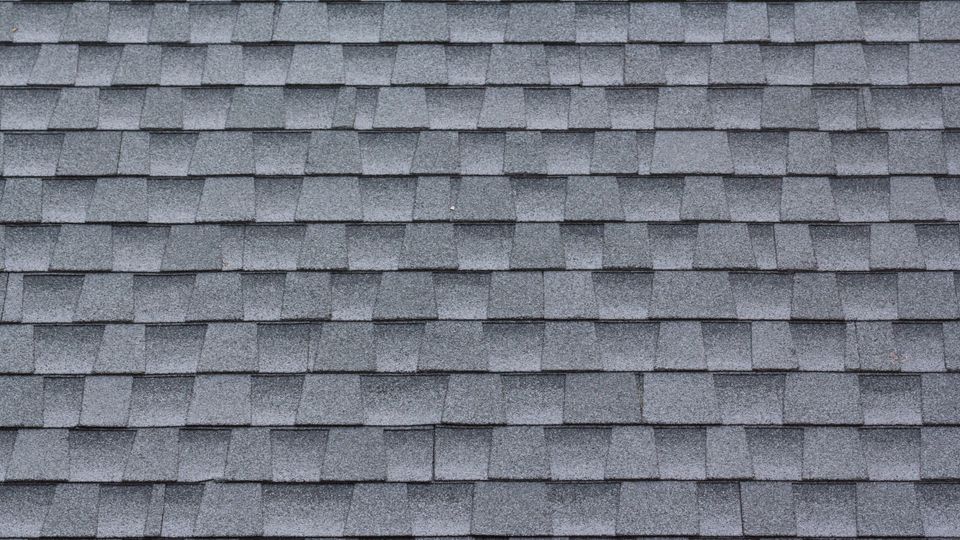
Composite shingles combine synthetic materials to create durable roofing products. These roofing materials often incorporate recycled materials like rubber and plastic. Composite shingles provide environmental benefits while offering excellent performance characteristics.
Steel shingles coated with stone granules provide metal durability with traditional appearance. These products resist impact damage and provide superior fire resistance. Steel shingles cost more than asphalt but less than premium natural materials.
Rubber shingles manufactured from recycled tires offer unique environmental benefits. These roofing materials provide excellent impact resistance and flexibility. Rubber products work well in climates with significant temperature fluctuations.
Copper shingles develop natural patina that creates distinctive appearance over time. These premium metal options provide exceptional longevity and corrosion resistance. Copper shingles cost significantly more than other metal alternatives but offer unmatched durability.
Installation methods for composite shingles vary by product type. Some systems use traditional fastening methods while others require specialized techniques. Understanding manufacturer requirements ensures proper installation and warranty compliance.
Steel shingles coated with stone granules provide metal durability with traditional appearance. These products resist impact damage and provide superior fire resistance. Steel shingles cost more than asphalt but less than premium natural materials.
Rubber shingles manufactured from recycled tires offer unique environmental benefits. These roofing materials provide excellent impact resistance and flexibility. Rubber products work well in climates with significant temperature fluctuations.
Copper shingles develop natural patina that creates distinctive appearance over time. These premium metal options provide exceptional longevity and corrosion resistance. Copper shingles cost significantly more than other metal alternatives but offer unmatched durability.
Installation methods for composite shingles vary by product type. Some systems use traditional fastening methods while others require specialized techniques. Understanding manufacturer requirements ensures proper installation and warranty compliance.
Selecting the Right Roofing Materials
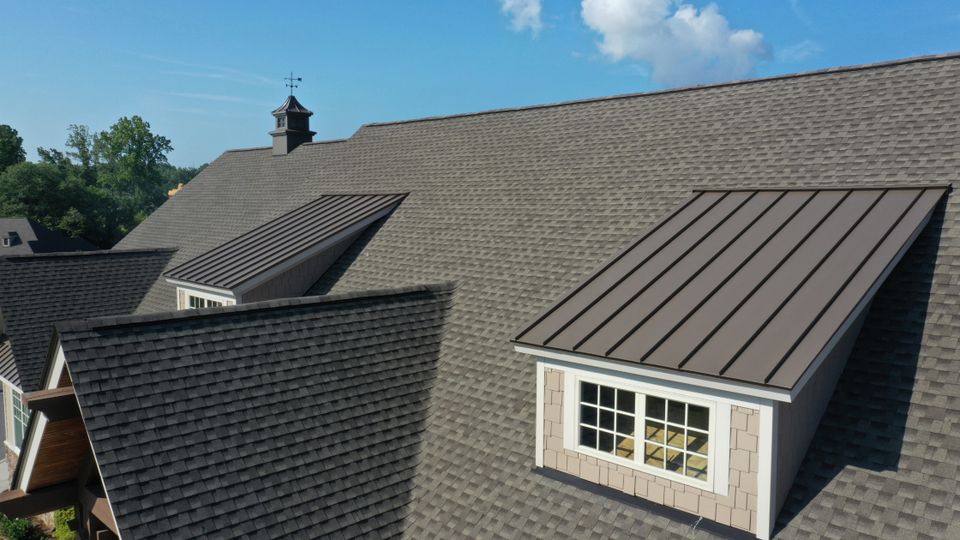
Climate and Environmental Factors
Choosing appropriate roofing materials requires careful consideration of multiple factors. Climate conditions affect which types of roof shingles perform best in your area. Budget constraints influence material selection and installation options.
Architectural Compatibility
Architectural style affects roofing material compatibility and appearance. Traditional homes often look best with wood shingles or slate tiles. Contemporary designs can accommodate metal roofing or solar shingles effectively.
Technical Requirements
Roof slope requirements vary between different roofing materials. Low-slope applications limit material choices to specific products. Steep slopes accommodate most shingle types but may require special installation techniques.Code and Association Restrictions
Local building codes and homeowner association rules may restrict material choices. Some areas prohibit wood shingles due to fire risk. Other locations require specific wind resistance ratings or impact resistance.
Professional Guidance
Professional consultation helps navigate the complex selection process. Roofing contractors understand local conditions and material performance. Their experience guides homeowners toward appropriate choices for specific applications.
When planning roof replacement, consider the installation timeline and weather requirements. Some roofing shingles require specific temperature ranges for proper installation. Learn more about the replacement process in our detailed guide.
Installation and Maintenance Considerations
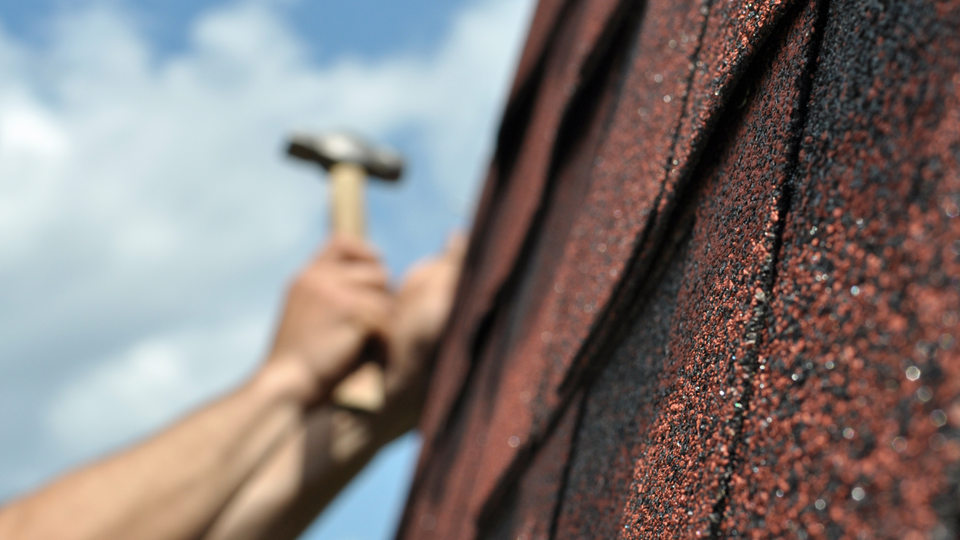
Professional Installation Standards
Proper installation ensures optimal performance from any roofing material. Each shingle type requires specific techniques and fastening methods. Professional installation protects manufacturer warranties and ensures code compliance.
Ongoing Maintenance Needs
Maintenance requirements vary significantly between roofing materials. Asphalt shingles require minimal upkeep while wood shingles need regular treatment. Understanding maintenance needs helps budget for long-term ownership costs.
Warranty Protection
Shingle manufacturers provide detailed installation instructions and warranty terms. Following these specifications ensures proper performance and maintains coverage. Deviation from manufacturer requirements can void warranties and cause premature failure.Repair Techniques
Roof repair techniques differ between types of roof shingles and damage patterns. Some materials allow individual piece replacement while others require section removal. Understanding repair methods helps plan for future maintenance needs.
Industry Innovation
The roofing industry continues developing new products and installation techniques. Emerging technologies improve performance, durability, and environmental impact. Staying informed about innovations helps homeowners make better decisions.
According to the Asphalt Roofing Manufacturers Association, proper installation and maintenance can extend shingle life by 25-40% compared to neglected roofs.
Making Your Investment Decision
Balancing Performance and Cost
Selecting the right types of roof shingles requires balancing performance, cost, and aesthetic preferences. Each roofing material offers unique advantages that suit different situations and budgets. Understanding these differences helps homeowners make informed decisions that provide long-term satisfaction.
Market Leaders
The most popular roofing material remains asphalt shingles due to their versatility and affordability. However, premium roofing options like metal, slate, and solar shingles offer superior performance in specific applications. Climate conditions, architectural style, and budget constraints influence the best choice for each home.
Professional Partnership
Working with a qualified roofing professional ensures proper material selection and installation. Experienced contractors understand local conditions and building requirements. Their expertise helps avoid costly mistakes and ensures optimal performance from your roofing investment.Total Cost Analysis
Consider the total cost of ownership when comparing roofing shingles. Initial material and installation costs represent only part of the equation. Maintenance requirements, energy efficiency, and lifespan affect long-term value significantly.
Environmental Impact
Environmental considerations increasingly influence roofing material choices. Recycled materials, energy efficiency, and sustainable manufacturing appeal to eco-conscious homeowners. Solar shingles and other environmentally friendly roofing options provide additional benefits beyond weather protection.
